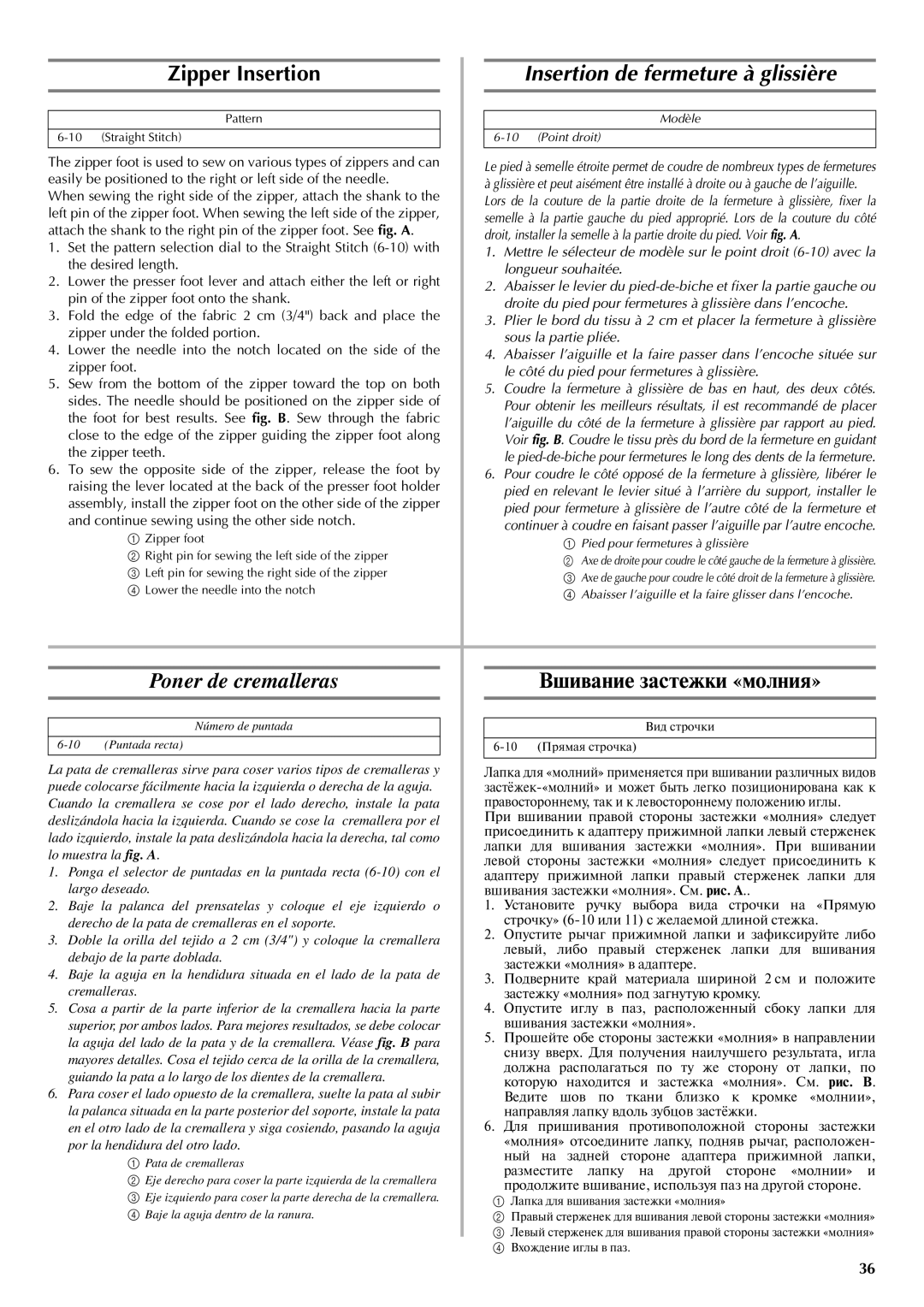LS-2720, LS-2220 specifications
The Brother LS-2220 and LS-2720 are versatile sewing machines designed for both beginners and experienced sewists. Both models come equipped with a range of features that simplify the sewing process and enhance creativity, making them popular choices in the market.The Brother LS-2220 is a mechanical sewing machine that offers 20 built-in stitches, including essential, decorative, and zigzag stitches. This variety allows users to create a wide range of sewing projects, from basic hemming to more complex patterns. The LS-2220 also includes a four-step buttonhole function, making it easier to add buttons to garments with precision. Its adjustable stitch length and width settings provide further customization, allowing sewists to achieve the perfect finish for any project.
On the other hand, the Brother LS-2720 is a step up, featuring 27 built-in stitches, giving users additional options for creativity. This model also boasts a one-step buttonhole feature, which simplifies the process and saves time. Both sewing machines are equipped with a drop-in bobbin system, ensuring quick and easy threading. The transparent cover makes it easy to monitor thread levels, reducing the likelihood of running out mid-project.
Technology-wise, both machines include a free arm design, which is especially beneficial for sewing cylindrical items like sleeves and pant legs. An automatic needle threader is also incorporated into the LS-2720, further streamlining the sewing process and making it incredibly user-friendly.
In terms of characteristics, both models are lightweight and portable, making them great options for those who need to store or transport their machines. The LS-2220 and LS-2720 come with an array of accessories, including presser feet for various tasks, a stitching guide, and a dust cover, ensuring that users have everything they need to get started immediately.
In conclusion, the Brother LS-2220 and LS-2720 are reliable and functional sewing machines catering to a range of sewing needs. Their array of built-in stitches, user-friendly features, and portability make them suitable for any sewing enthusiast looking to bring their creative visions to life.

